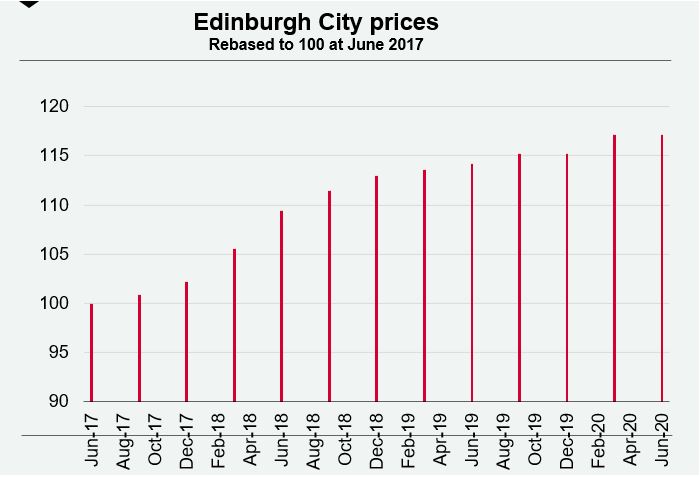Edinburgh property market regains momentum in first weeks after lockdown eased
House 104.1 / Flat 124.6 / Index 108.8
2 minutes to read
Demand has surged in Edinburgh’s city market in the fortnight since the property market reopened in Scotland, signalling a potential rise in sales volumes.
Offers made were up 141% versus the five-year average in the two weeks following the re-opening on 29 June, as the property market picked up where it left off before lockdown.
The number of new prospective buyers and viewings were also up in the same period versus the five-year average, rising 165% and 42%, respectively.
“The market has picked up again with an added sense of urgency. It actually feels hotter now than it did in the first few months of the year before lockdown,” said Edward Douglas-Home, Head of Scotland Residential at Knight Frank.
Sellers are responding to the rise in demand, with new instructions to sell up 175% versus the five-year average over the same period.
The bounce is consistent with what has happened in England since the market reopened on 13 May.
Q2 prices
Prices in Edinburgh were flat in the second quarter of the year, with the Scottish property market effectively frozen during the entire period.
Prices rose 1.7% over the first six months of 2020 after Q1 registered the strongest rate of quarterly growth since the autumn of 2018.

Edinburgh prices have risen 17.1% over the past three years and demand continues to come from within and outside of the country. Some 43% of sales over the last three years involved buyers from outside of Scotland.
While the unwinding of the UK furlough scheme and uncertainty surrounding the jobs market are likely to affect sentiment in the coming months, the Scottish Government recently raised the tax-free threshold for Land and Buildings Transaction Tax (LBTT) from £145,000 to £250,000.
The move, which followed a similar measure in England and Northern Ireland, should support activity in the Scottish housing market in the short-term, as will historically low interest rates, and is due to run until 31 March 2021.
Photo by Andy Falconer on Unsplash